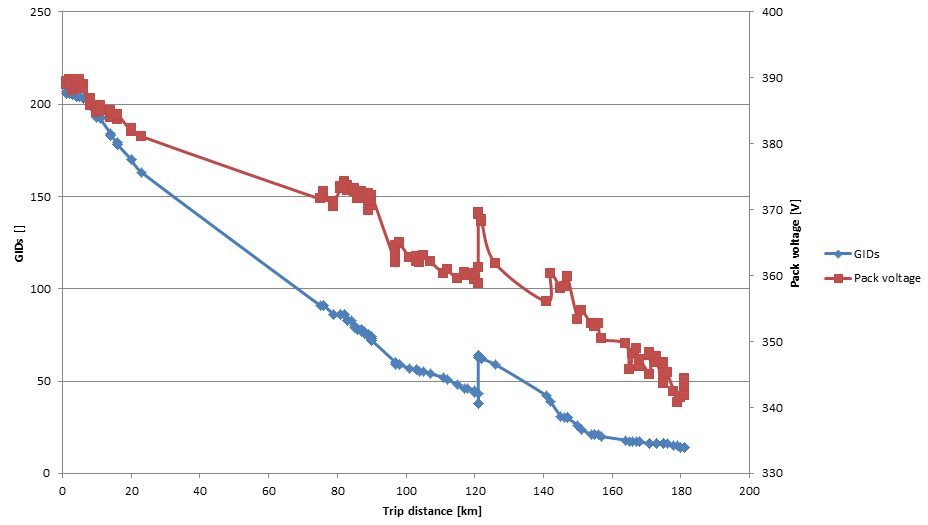Yeah, this monday I shot a little segment of video exactly about that. I'm now on the hunt for an SD card reader, which apparently is pure luxury in this neck of the woods because no store seems to carry them.
It fast charges at a - for an old '11 Leaf - blistering rate with the new pack. We were drawing 40kW, of which about 26 was going into the extender and 13ish (the usual rate without extender) was going into the main pack. Interestingly, despite the vast discrepancy, the extender barely warmed up while the main pack heated up to 12 degrees C above ambient. This may also have had to do with us being in the hills and me not really caring about efficiency, so running the car pretty hard.
Long story short: there is literally no reason why anyone with the skills and an old Leaf shouldn't build an extender. It only makes the car better. And the cost or time investment really isn't that huge, at least in Europe. This is $2k in batteries and two weekends of your time.
That being said: I'm still holding out to do the full illustrated tutorial until I've cracked the GoM range estimation and centralized BMS readout/balancing. Right now, you have to have balls of steel to use my car; even after VLBW you can comfortably drive another 60-80km on the remaining charge in the extender, but the car will not give you any useful feedback on range. You have to trust Leafspy's voltage.
Today we're going on a little trip to Trier, which is just in range of the car. I'll log it with Leafspy if I find out how that's done.
It fast charges at a - for an old '11 Leaf - blistering rate with the new pack. We were drawing 40kW, of which about 26 was going into the extender and 13ish (the usual rate without extender) was going into the main pack. Interestingly, despite the vast discrepancy, the extender barely warmed up while the main pack heated up to 12 degrees C above ambient. This may also have had to do with us being in the hills and me not really caring about efficiency, so running the car pretty hard.
Long story short: there is literally no reason why anyone with the skills and an old Leaf shouldn't build an extender. It only makes the car better. And the cost or time investment really isn't that huge, at least in Europe. This is $2k in batteries and two weekends of your time.
That being said: I'm still holding out to do the full illustrated tutorial until I've cracked the GoM range estimation and centralized BMS readout/balancing. Right now, you have to have balls of steel to use my car; even after VLBW you can comfortably drive another 60-80km on the remaining charge in the extender, but the car will not give you any useful feedback on range. You have to trust Leafspy's voltage.
Today we're going on a little trip to Trier, which is just in range of the car. I'll log it with Leafspy if I find out how that's done.

